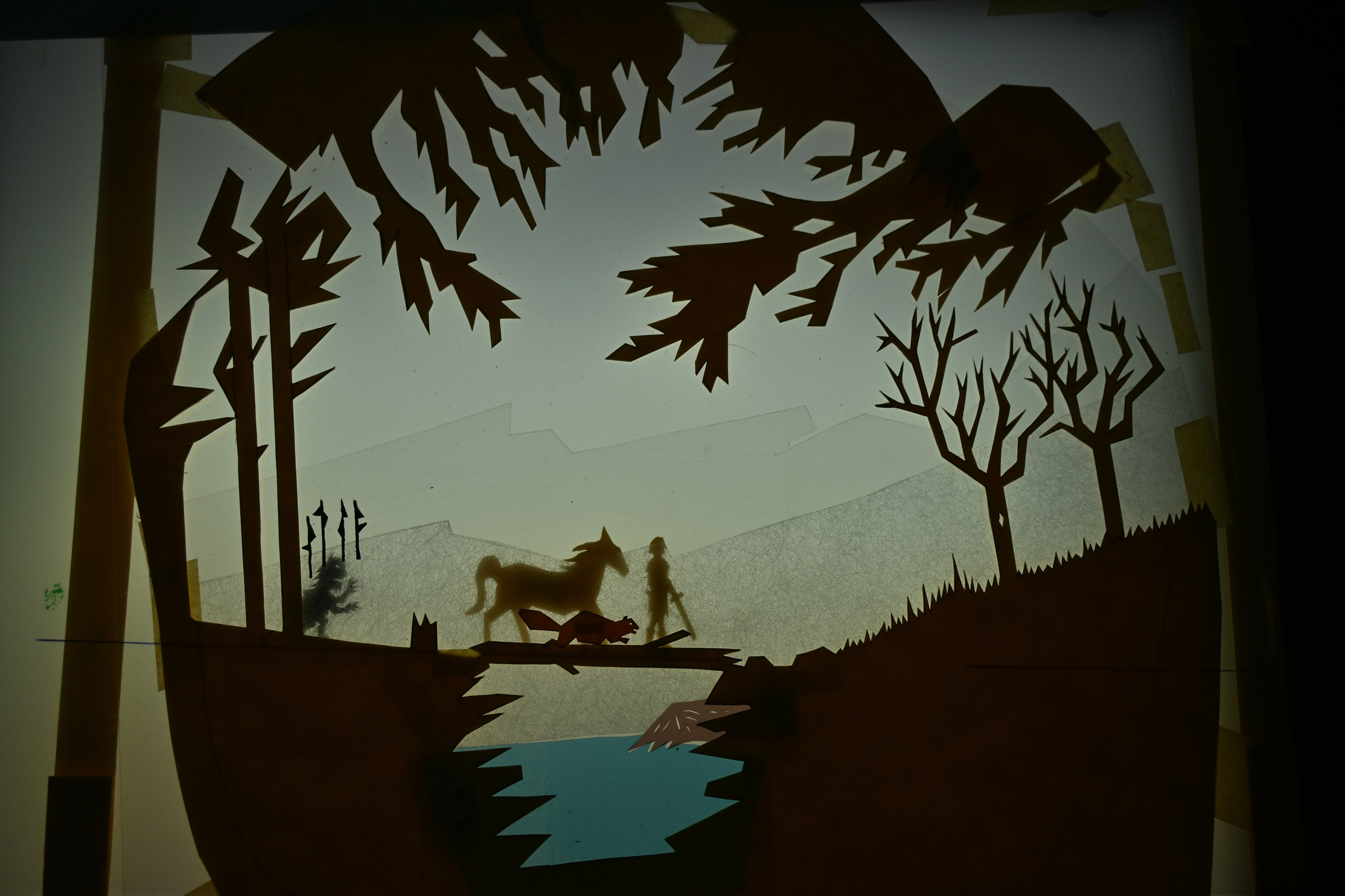
The Janibeth Johnson Collection:
Her Life and Her Puppetry
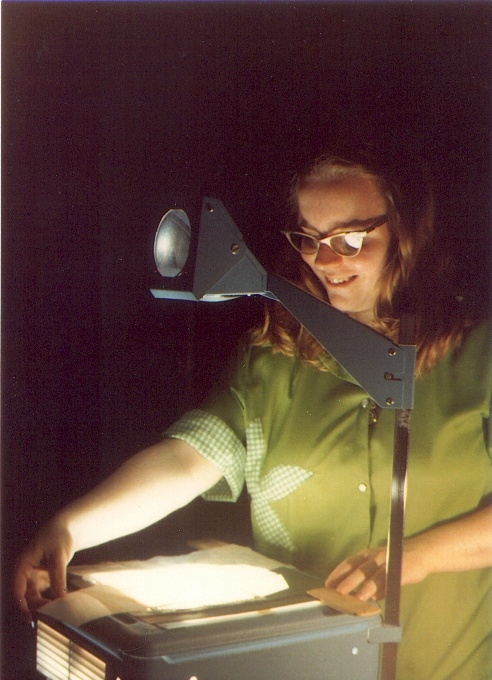
Janibeth Johnson
(1946-2022)
Janibeth Johnson developed a love of theater that blossomed under the inspired teaching of Frank W. Ballard, the University of Connecticut professor that developed a world renowned puppetry program. Over a period of fifteen years, Ms. Johnson worked both independently and with the University of Connecticut puppeteers, pioneering innovative techniques in live shadow puppet animation for the overhead projector. This included a self-published book, which helped make her an internationally recognized expert on the subject. She taught puppet workshops and coordinated puppet exhibits. She performed with Frank Ballard's puppet opera troupe at Goodspeed Opera House, the John F. Kennedy Performing Arts Center, and with the Hartford Symphony. In 1987, she co-founded the Puppet Preservation Trust (later known as the Ballard Institute and Museum of Puppetry) to establish the first puppet museum in the State of Connecticut.
In the 1980's, Ms. Johnson left Storrs for Willimantic and Hartford, and became active in the LGBTQ civil rights movement. She also participated in pioneering research work with Dr. Randy Frost on obsessive-compulsive disorder (OCD) and chronic clutter.
About the collection
At her death, Ms. Johnson owned three houses filled with possessions, which included the overhead projector shadow puppets from the 1970s and 1980s. In addition, there are a variety of supportive photos and documents from various areas of her life.
Size:
At this time, the physical collection of the puppets alone is approximately 1000 cubic feet. Digital media includes a range of photos and videos on external drives, USB drives, DVDs and digital photo cards. Other portions of the collection, such as Family History, LGBTQ activism, and Obsessive Compulsive Disorder, have not yet been assessed for size.
Support:
Once the estate is closed, an amount of money will be delivered with the collection to the receiving institution. In addition, the copyright for Ms. Johnson’s book, “Shadow Puppetry on the Overhead Projector” may be given to the receiving organization.
Research Value and Connections:
Subjects include:
Shadow Puppetry on the Overhead Projector (1970 - 2004)
Obsessive-Compulsive Disorder (1980s - 2022)
Family history (New England and Wisconsin, 1900 - 1980)
LGBTQ activism in Hartford 1980s-1990s
Willington Wild Animal Farm 1970s
Other Stakeholders:
The Ballard Institute and Museum of Puppetry was first approached about this collection. They are not accepting any new materials at this time. Ms. Johnson donated samples of her overhead projector shadow puppets to the Ballard Institute sometime in the 1990s.
Shadow Puppetry on the Overhead Projector
is an unfamiliar art for most people.
It is essentially live animation.
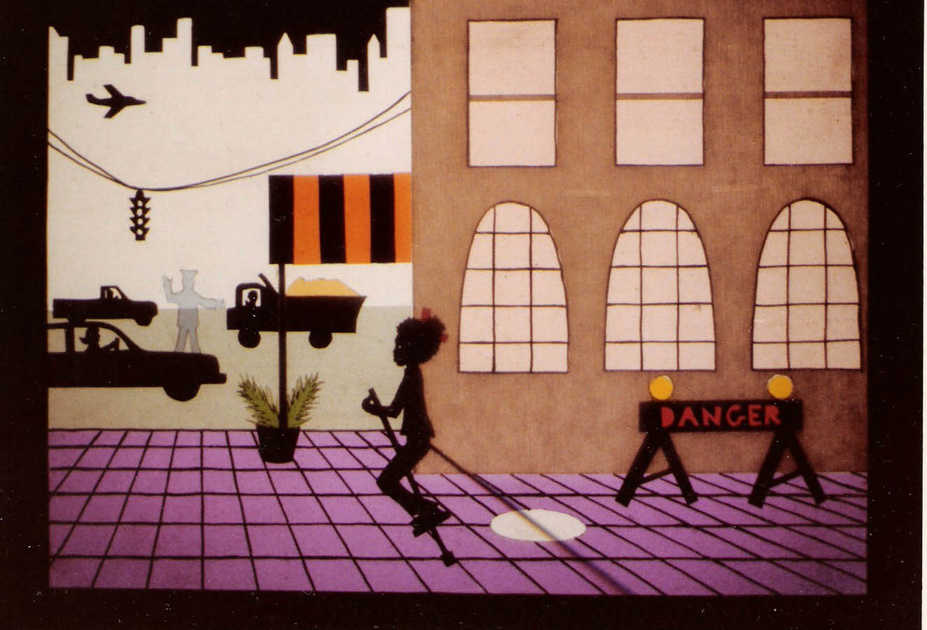
At left is an overhead projector image of the 1976 Connecticut Public Television production of "From The Top".
Above is a photo of the puppet that moves throughout the scene. Puppeteers operate the puppets and scenic elements.
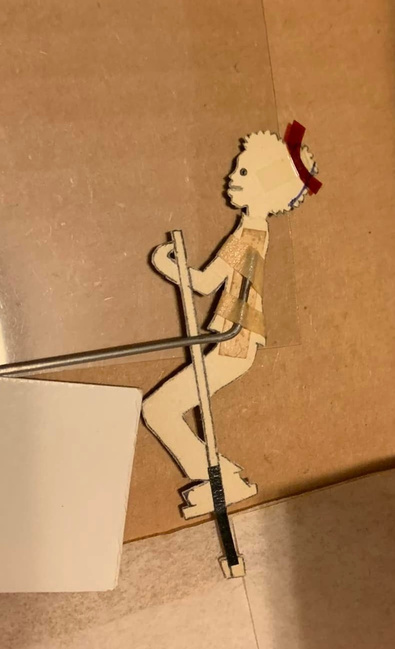
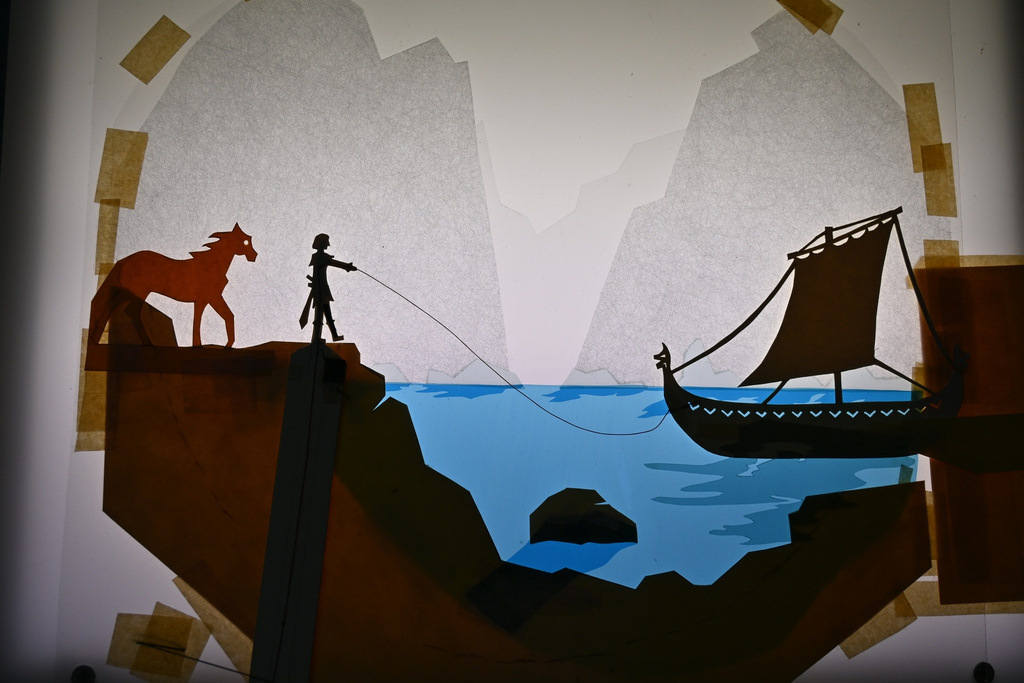
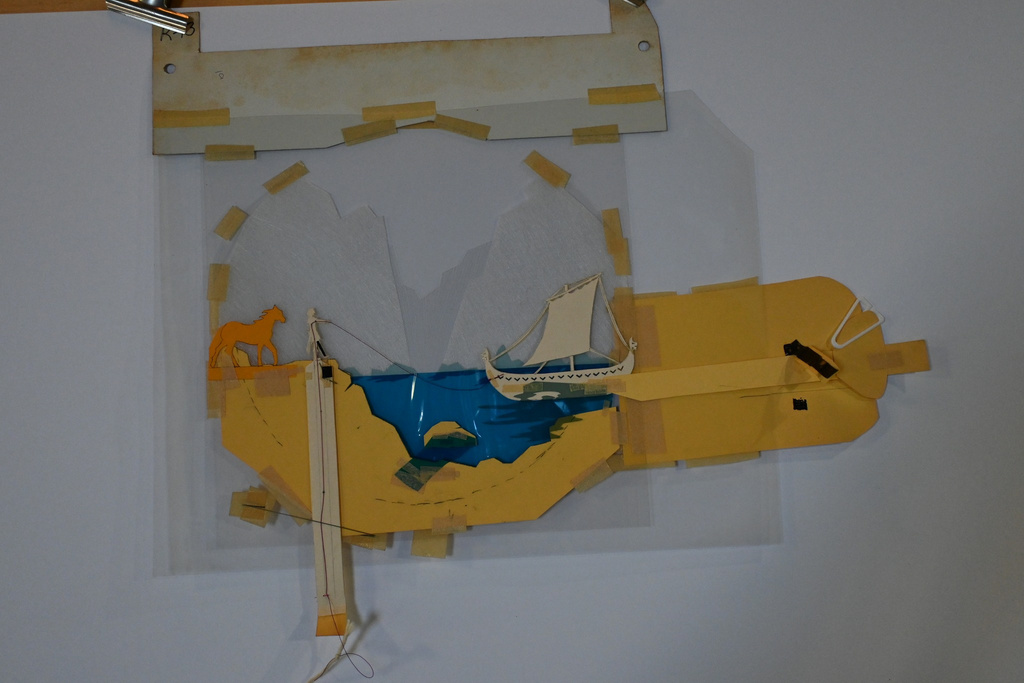
These two photos are of the same overhead projector 'plate'. The one on the left has been photographed on a light box. The one on the right has been photographed in normal daylight. Mechanisms hidden within the plate allow the puppeteers to animate pulling the boat close to shore. Janibeth invented many techniques which were used to move the figures.
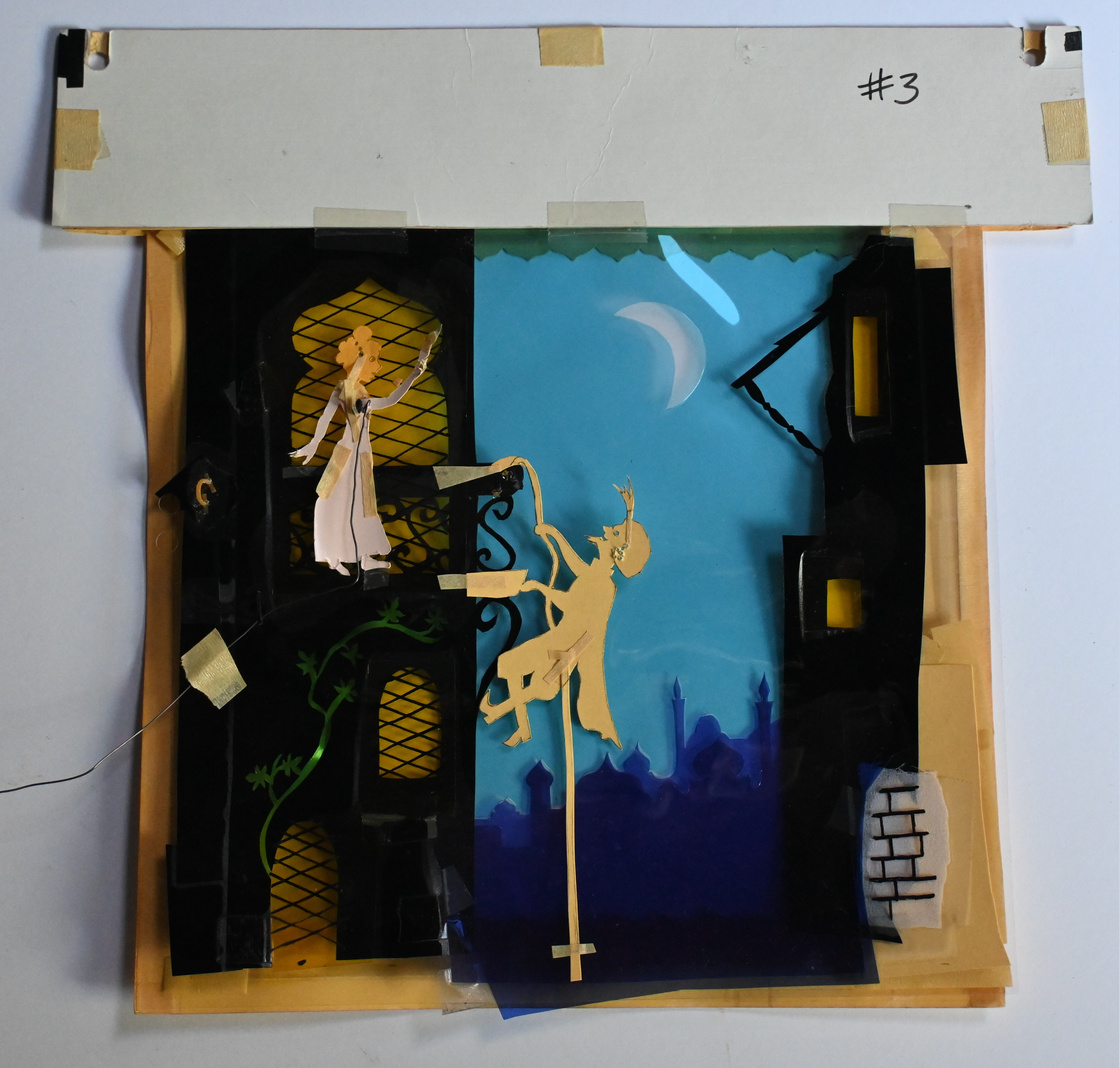
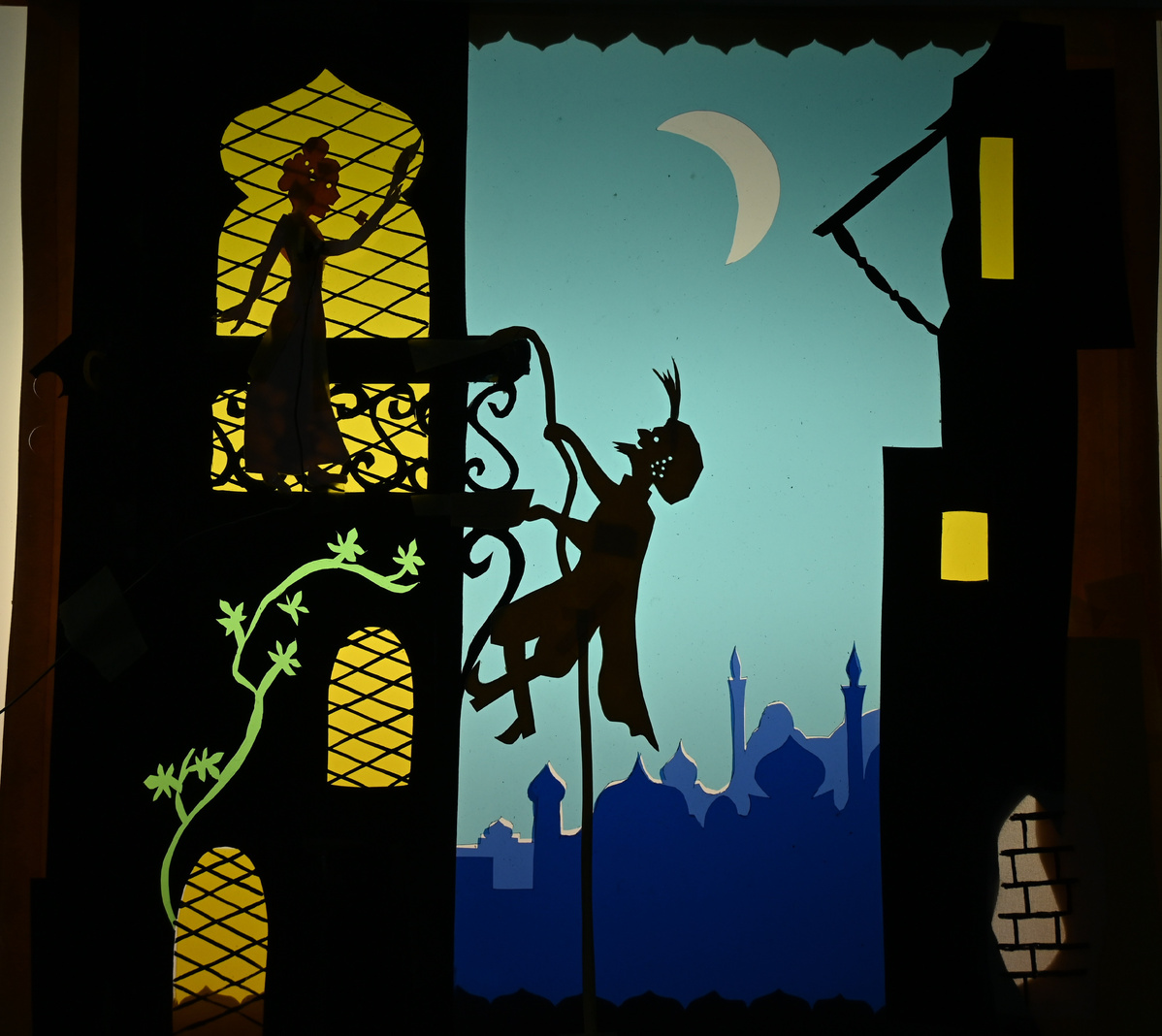
One of the overhead projector shadow puppetry plates from Kismet (1975), photographed in two ways: daylight (L) and on a light box (R).
Since Ms. Johnson’s pioneering work in developing techniques to use overhead projectors in puppetry, many artists and companies have incorporated them:
Manual Cinema, a Chicago-based theater, film and animation company, has been using them in their live programs. Puppetsweat, a company out of New Haven, has presented several programs that integrate overhead projectors in a variety of performance applications. The dance company Momix has also used overhead projectors.
Because of the need for live, online entertainment, overhead projectors may be part of the future of entertainment.
Animation shown in process from the
1977 University of Connecticut production of
"The Golden Cockerel".
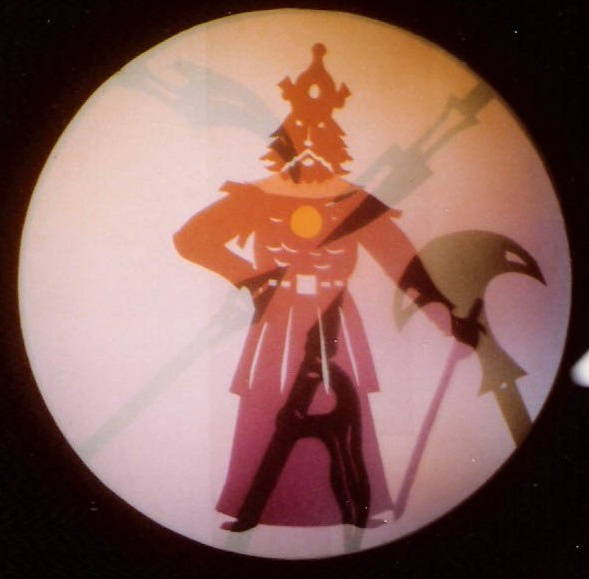
Janibeth Johnson wrote the first book on the use of overhead projectors in shadow puppetry in 1976. Her idol was Lotte Reiniger, a pioneer in animated film.
Whitney Grace, who wrote a new biography of Reiniger, interviewed Janibeth about her work and how it was influenced by Reiniger.
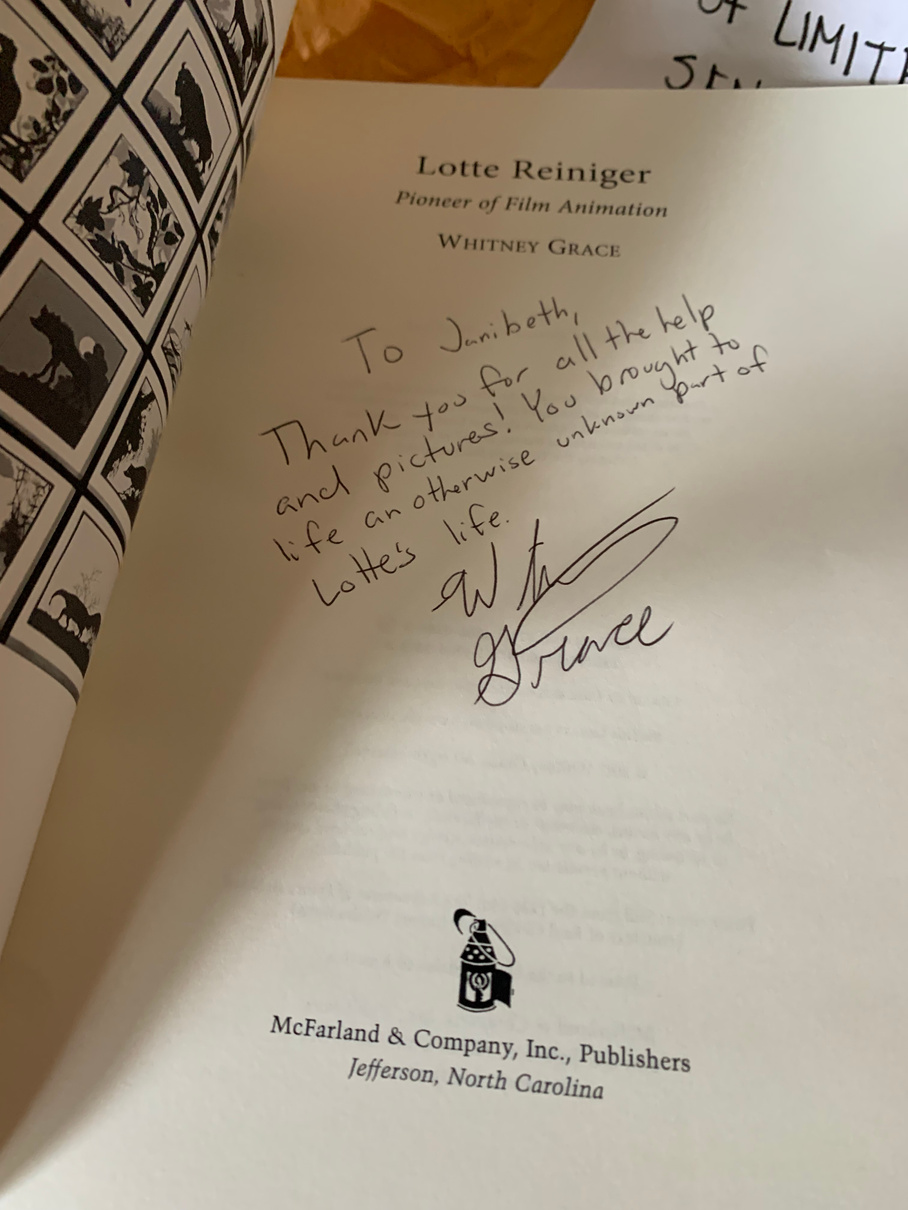
Family History
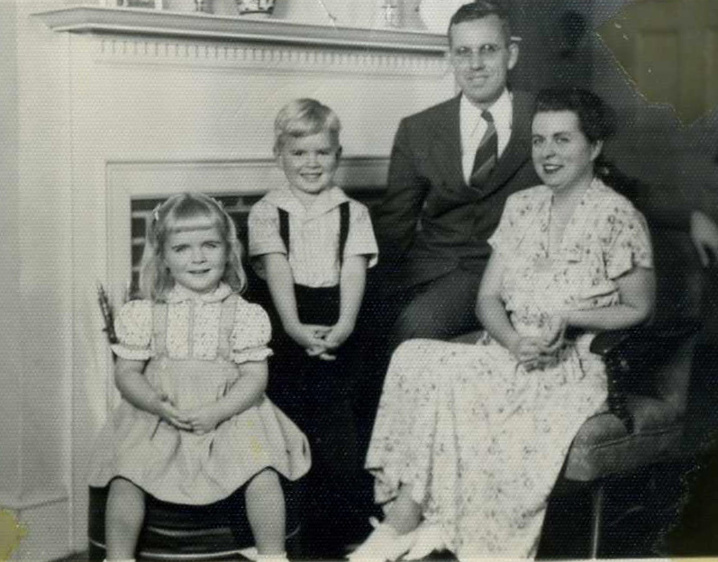
Janibeth, her brother, and her parents, 1949.
Janibeth’s father came from Wisconsin to work as a professor at the University of Connecticut in the Department of Agriculture. Her mother was born in Vermont, grew up in Greenwich, Connecticut, and was trained as a teacher at Wheaton College.
Diaries from her grandmother’s farm life in Wisconsin and from a 1938 European tour of her mother’s are within this collection.
Obsessive-Compulsive Disorder
Because of her own struggles with OCD, Ms. Johnson created a business based on helping people cope with clutter. She was interviewed often about this work.
Randy O. Frost, a professor of psychology at Smith College and the author of books on the subject, recommended “Beth Johnson’s Clutter Workshop” to other people struggling with hoarding issues.
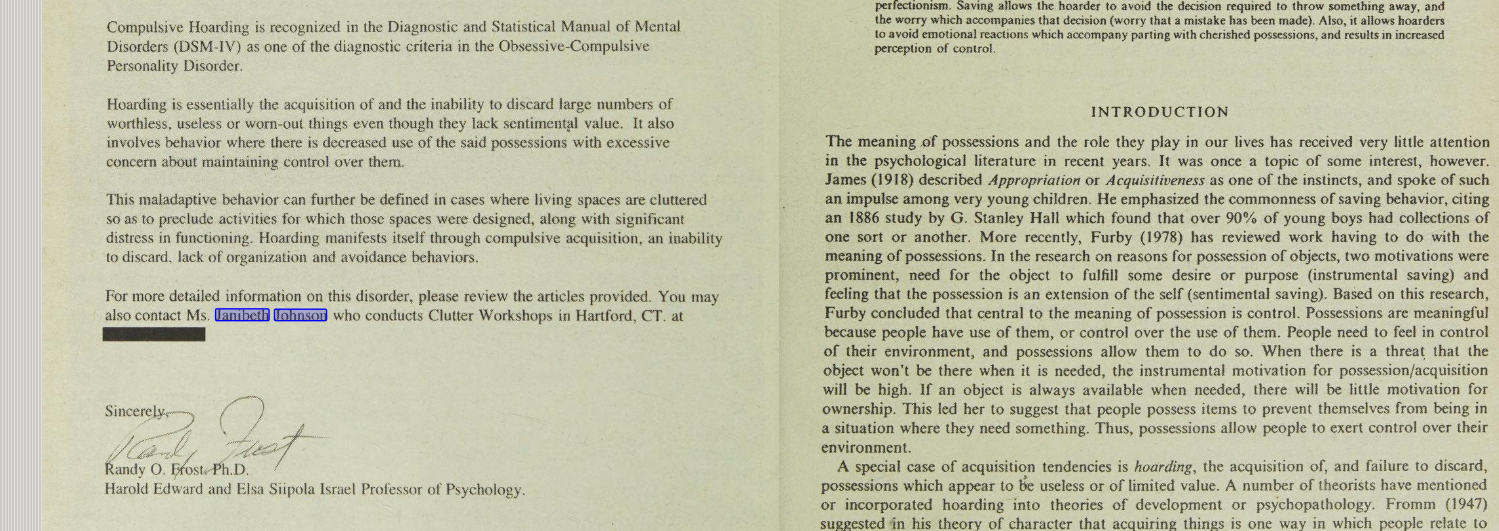
LGBTQ Activism
Throughout the 1980s, Janibeth Johnson participated in various activities with LGBTQ organizations, including Dignity/Hartford and the Radical Faeries.
This part of the collection includes the figure shown here, costume designs and fabrics for gay pride parades, and promotional materials for events.
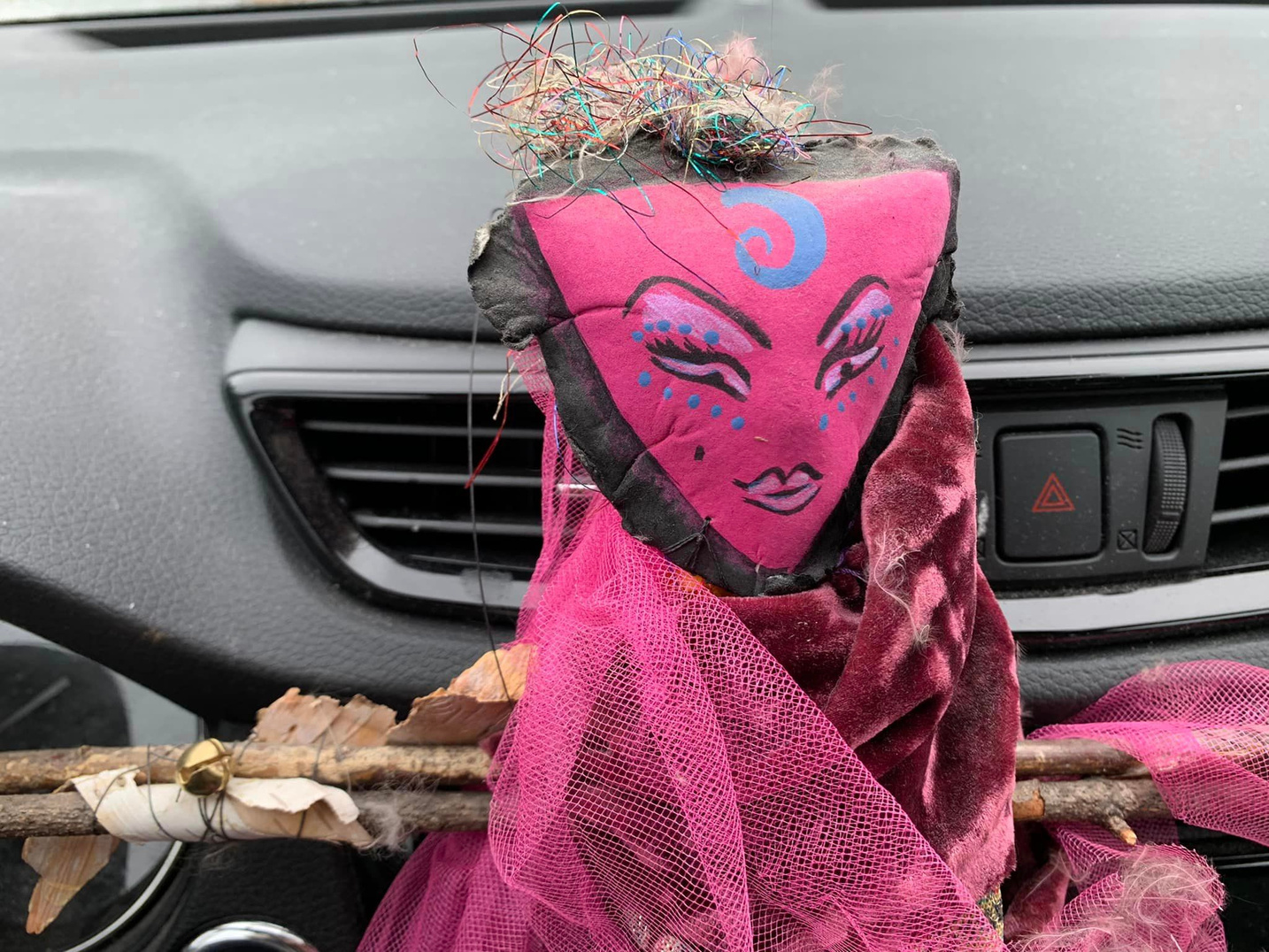
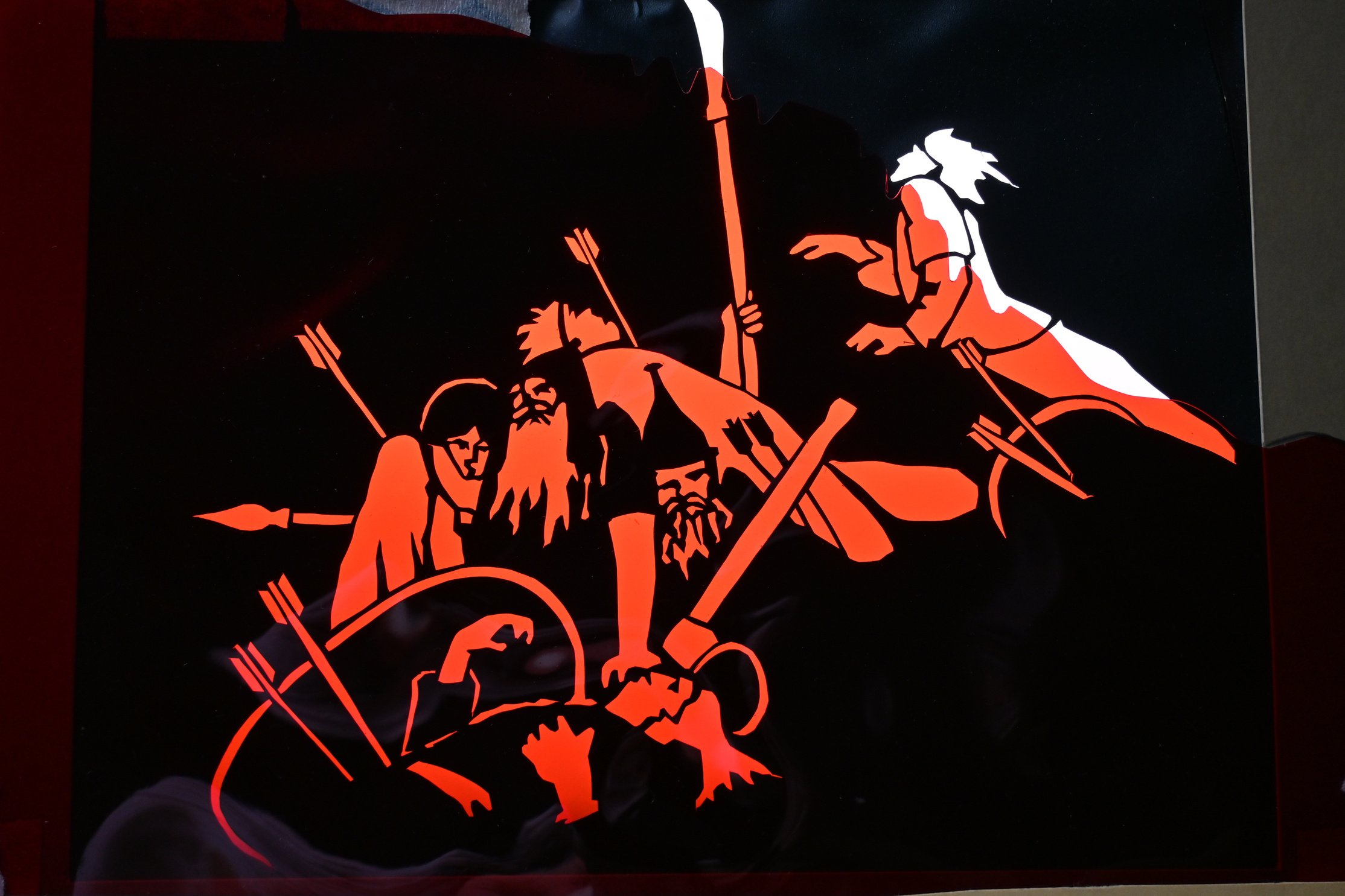
For more information
on the collection contact:
EstateofJanibethJohnson@proton.me